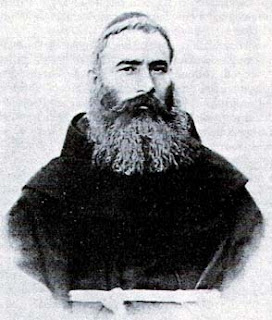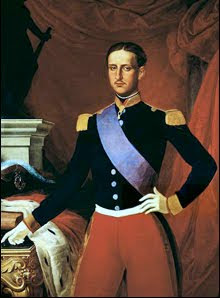 |
| On my way to the Metropolitan Museum of Art, I paused for a moment to say a prayer for the fallen by the One Hundred Seventh Infantry Memorial by Karl Illava (1896-1954) in Central Park along Fifth Avenue at 67th Street |
The great artists of the past were aware that human life is full of chaos and suffering. But they had a remedy for this. And the name of that remedy was ‘beauty’. The beautiful work of art brings consolation in sorrow and affirmation in joy. It shows human life to be worthwhile. ~ Sir Roger Scruton
Taking a much-needed day off, I decided to treat myself with a visit to the Metropolitan Museum of Art (Met) in New York City. I have not been to the museum since the draconian Covid lockdowns, so I was really looking forward to returning. Outside of reading and friendly or familial gatherings, my tranquil ambles through its stately halls and galleries have always been one of my more pleasurable leisurely pursuits.
With the noted exceptions of Chroma: Ancient Sculpture in Color and The Tudors: Art and Majesty in Renaissance England, I'm not overly enthused by the current temporary exhibitions. However, the Met’s enviable permanent collection is more than enough to bring me back time and time again. One can never behold the museum’s countless treasures of a bygone world too many times.
For those thinking of visiting New York City, the Met, along with the Morgan Library & Museum, the Frick Collection, the Hispanic Society Museum & Library, the Metropolitan Opera House at Lincoln Center for the Performing Arts, among others, are world-class institutions and well worth a visit, even with their extortionate admissions.
Nevertheless, be warned, the city is not as safe as our corrupt (and well-guarded) politicians and their shills would have us believe. The city’s harrowing state is impossible to hide, especially if one is commuting by subway. A sobering experience to say the least, it is inconceivable that we belong to the same civilization as the one that produced many of the great masterpieces housed in the Met.
That said, I am still looking forward to coming back later in the month for the Annual Angel Tree and Neapolitan Baroque Crèche installation in the Medieval Sculpture Hall. One of my favorite Christmas traditions, I am loath to give it or any other beloved custom up so easily.
[See Part 2] [See Part 3]
 |
(L) Pygmalion and Galatea, ca. 1890, oil on canvas by Jean-Léon
Gérôme (1824-1904). (R) Brigand and His Wife in Prayer,
1824, oil on canvas by Léopold Robert (1794-1835) |
 |
(L) Orpheus and Eurydice, modeled ca. 1887, carved 1893
by Auguste Rodin (1840-1917). Final Study for the Monument
to Balzac, modeled 1897, cast 1972 by Auguste Rodin |
 |
| (Front) Silver reliquary bust of St. Yrieix with rock crystals, gems and glass, French, 1220-40. (Back) Walnut bust of St. Yrieix, French, 1220-40 |
 |
(L) The Death of Harmonia, ca. 1740-41, oil on canvas by Jean-Baptiste
Marie Pierre (1714-1789). (R) The Companions of Rinaldo,
ca. 1663, oil on canvas by Nicolas Poussin (1594-1665) |
 |
(L) Philip IV, King of Spain (1605-1665), probably 1624, oil on canvas by
Diego Rodríguez de Silva y Velázquez (1599-1660). (R) Admiral De Tourville
(1642-1701), terracotta, 1816, by Joseph-Charles Marin (1759-1834) |
 |
María Teresa, Infanta of Spain (1638-1683), oil on canvas, 1651-54,
by Diego Rodríguez de Silva y Velázquez (1599-1660) |
 |
(L) María Teresa, Infanta of Spain (1638-1683) ca. 1645, oil on canvas
by Juan Bautista Martínez del Mazo (ca. 1612-1667). (R) Queen
Henrietta Maria, 1636, oil on canvas by Anthony van Dyck (1599-1641) |
 |
| (L) Bust of the Comte du Muy (d.1775), marble signed and dated 1776 by Jean-Jacques Caffiéri (1725-1792). (R) Louis of France, the Grand Dauphin (1661-1711) bronze late 17th century by François Giardon (1628-1715) |
 |
(L) The Penitent Magdalen, ca. 1640, oil on canvas by Georges de la Tour
(1593-1652). (R) The Tears of St. Peter, ca. 1612-13, oil on canvas
by Jusepe de Ribera, called Lo Spagnoletto (1591-1652) |
 |
(L) Galatea, 1906, cast silver and marble by Max Klinger (1857-1920).
(R) Winter, 1787, bronze by Jean Antoine Houdon (1741-1828) |
 |
(L) Julius Caesar, ca. 1512-14, marble by Andrea Ferrucci (1465-1526).
(R) Spinario, ca. 1507-9, bronze attributed to Antonello Gagini (1478-1536) |
 |
| (L) Santa Giuliana de' Banzi, ca. 1470-75, terracotta, traces of later polychrome by Niccolò Dell'Arca (ca. 1435-1494). (R) Reliquary Bust of a Female Saint, early 16th century, painted and gilded wood, South Netherlandish |
 |
(L) Apostle or Saint, ca. 1520s, polychrome and gilded wood by Alonso
Berruguette (1488-1561). (R) St. John the Baptist, early 17th century,
painted and gilded wood by Juan Martínez Montañés (1568-1649) |
 |
| (L) Reconstruction of a marble statue of the goddess Artemis from Pompeii, ca. 1st century B.C.-1st century A.D. (R) Reconstruction of a marble statue of an archer in the costume of a horseman from the west pediment of the Temple of Aphalia. They're part of the Chroma: Ancient Sculpture in Color exhibit on view in the Greek & Roman Art galleries from July 5, 2022 to March 26, 2023 |
 |
(L) Marble capital and finial in the form of a sphinx, Greek, ca. 530 B.C.
(R) Imagined reconstruction currently on view |
 |
(L) Boxer at Rest, bronze Hellenistic sculpture (323-32 B.C.) was on view at the Met back in 2013. (R) The imagined reconstruction currently on view
 | Detail of the reconstructed statue of the Boxer at Rest (or Terme Boxer)
|
|
 |
| St. Thomas More (1478-1535), 1527, oil on panel by Hans Holbein the Younger (1497/98-1543). It is part of the ongoing The Tudors: Art and Majesty in Renaissance England exhibit (October 10, 2022-January 8, 2023) |
 |
| (L) Henri VIII (1491-1547), oil on panel (ca. 1537) by Hans Holbein the Younger (1497/98-1543). (R) The Sieve Portrait of Elizabeth I (1533-1603), 1583, oil on canvas by Quentin Metsys the Younger (1543-1589). They are part of the ongoing The Tudors: Art and Majesty in Renaissance England exhibit |
 |
| (L) Henri VIII, ca. 1540, workshop of Hans Holbein the Younger. (R) Armor Garniture of George Clifford, Third Earl of Cumberland (1558-1605), made in 1586 under the direction of master armorer Jacob Halder (active 1576-1608). They are part of the ongoing The Tudors: Art and Majesty in Renaissance England exhibit (October 10, 2022-January 8, 2023) |
 |
| (L) Armor Garniture, probably of Henry VIII of England, dated 1527, various artists. (R) Field Armor of Henry VIII of England, ca.1544, Milan or Brescia. They are part of the ongoing The Tudors: Art and Majesty in Renaissance England exhibit (October 10, 2022-January 8, 2023) |
 |
| Henry VII Cope, velvet cloth-of-gold, brocaded with loops of silver-gilt and silver; embroidery on tabby linen in silver-gilt thread and silk, 1499-1505, Florence or Lucca. It is part of the ongoing The Tudors: Art and Majesty in Renaissance England exhibit (October 10, 2022-January 8, 2023) |
 |
| Henry VII Cope, velvet cloth-of-gold, brocaded with loops of silver-gilt and silver; embroidery on tabby linen in silver-gilt thread and silk, 1499-1505, Florence or Lucca. It is part of the ongoing The Tudors: Art and Majesty in Renaissance England exhibit (October 10, 2022-January 8, 2023) |


























































